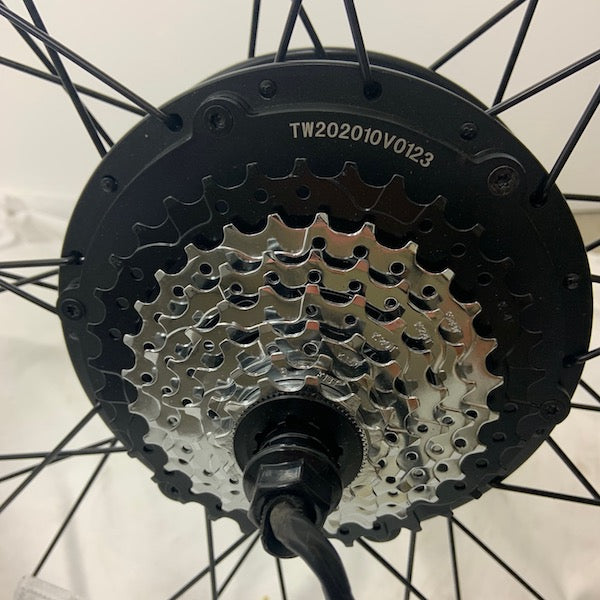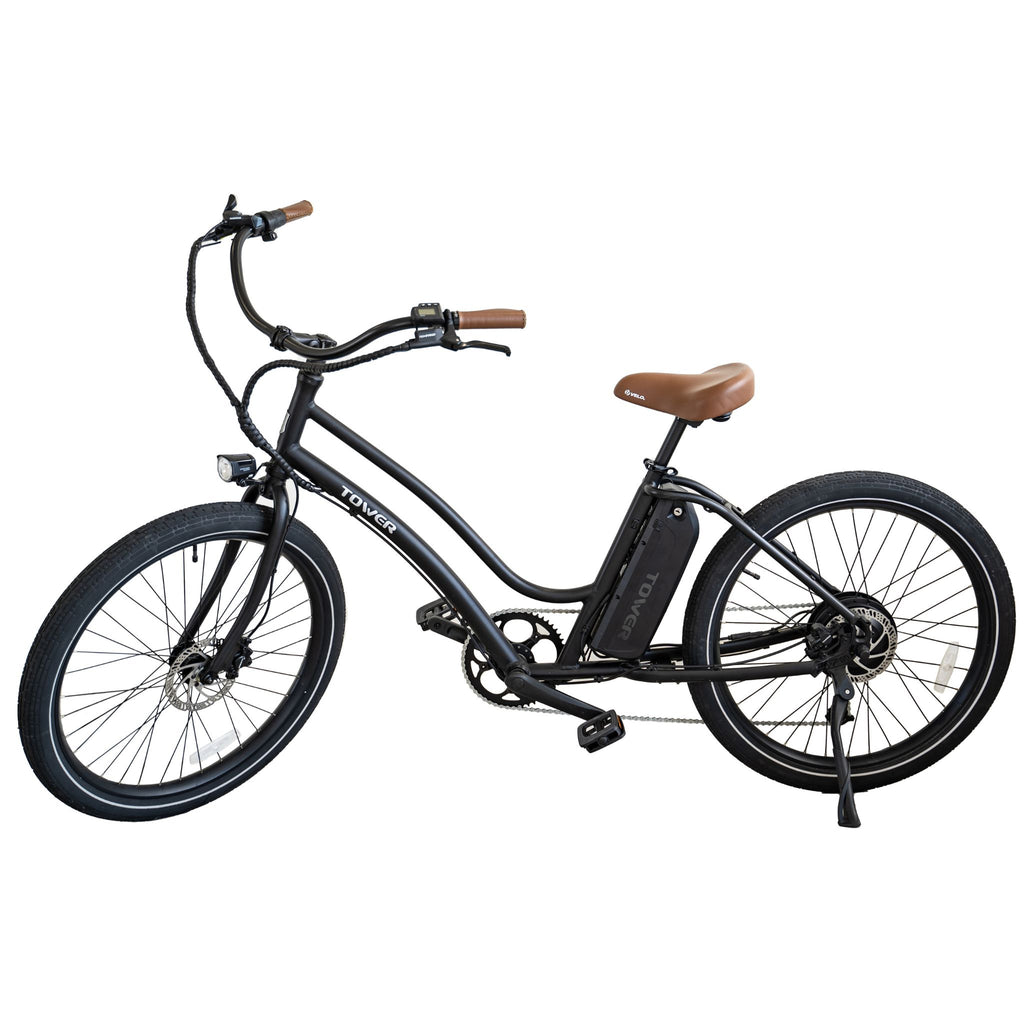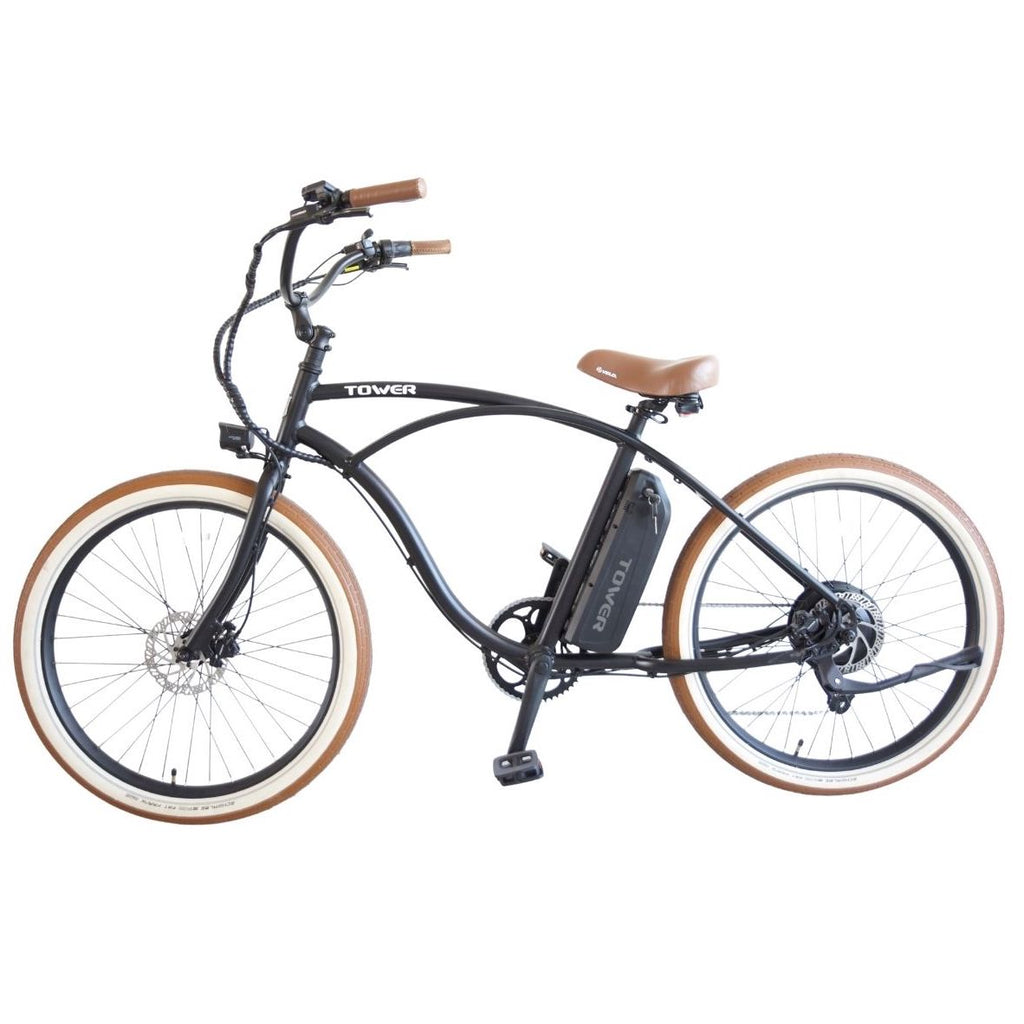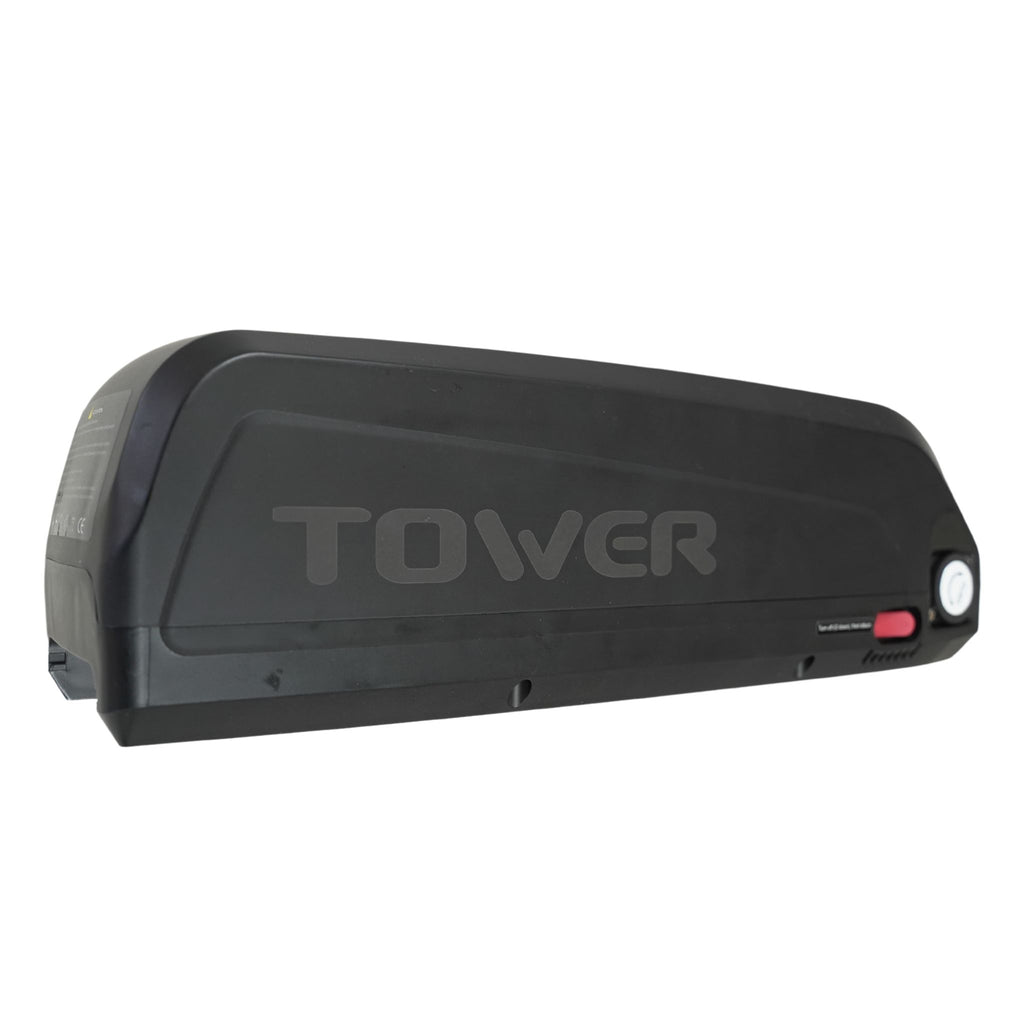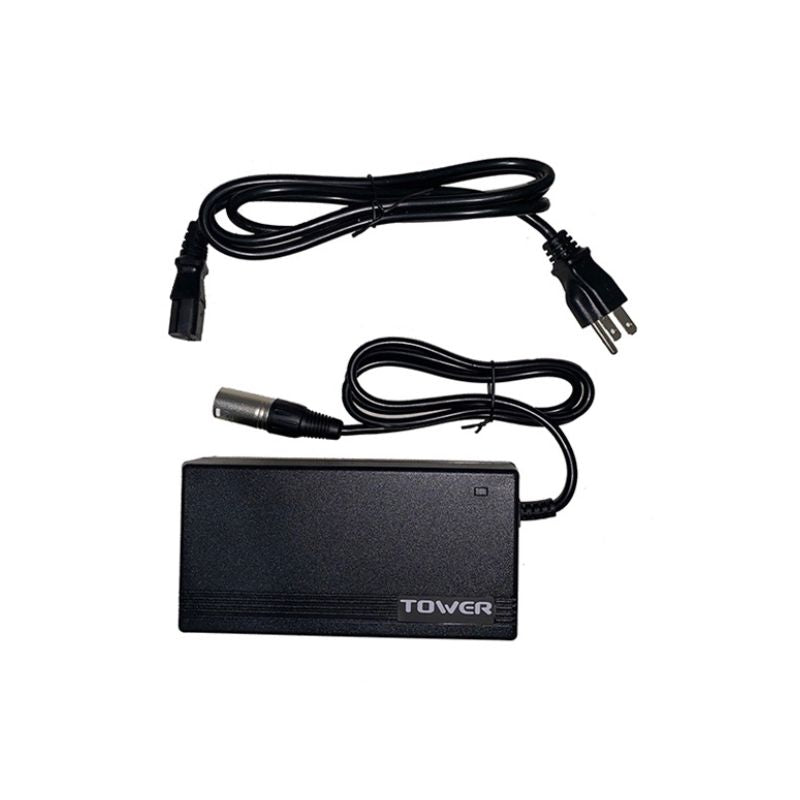Ebikes are generally classified as having either a hub motor or a mid-drive motor. Both have their advantages and disadvantages. In this article, we will also delve into their unique differences and weigh in our opinion based on our wealth of experience within the ebike industry.
What is a Hub Motor?
A hub motor is a motor that is built inside the wheel of the bike. It could either be on the front or the rear wheel. It is usually controlled by an outbound controller box which is powered by the bike’s battery and engaged using the throttle and the pedal assist.
A hub motor is a single ratio motor. Especially for most ebikes under $2000.00, those will have a set of planetary gears that take the power from the hub motor and put it to the outer edge of the hub powering the wheel.
A disadvantage of a hub motor configuration is that in highly inclined terrain you will not be able to shift gears and power through various gear ratios. As you go through the power curve, the motor and the bike will lose speed as you go further uphill. If the hub motor is not from a decent manufacturer, there is a good chance that it will easily be damaged and needs repairing or replacement.
Here at Tower, we test our hub motors thoroughly very steep hills and try to ensure that our hub motors on our ebikes, like our electric cruiser bike, can climb and do well in any hill or incline.
What is a Mid-drive?
The most noticeable difference between a hub motor and a mid-drive is that the mid-drive has its motor in the crank position. It is located near pedaling part of the bike and it uses the native drivetrain, the chain, or belt, with an internally geared hub, cassette, or freewheel system with a derailleur to give you a wide range of gears.
This type of motor allows you to achieve higher top speeds by changing the gear ratio to the high end, and also allows you to have a better climbing power as well in steep terrains. If you are going down a hill, you can shift down into a lower gear and be pedaling as if you were pedaling on a normal surface. This is a great advantage for a mid-drive where a hub driven motor will be very limited.
However, having a wider range of gears and a multitude of options for power ratios comes at a price. Mid-drive ebikes are generally more expensive and it;s almost impossible to find a mid drive motored ebike under $2,500. It goes without saying, the price of a mid drive bikes is the reason why mid-drives are not as commonly found on ebikes when compared to hub motors.
Maintenance and Servicing
As far as service goes, a mid-drive motor is much more difficult to service than a hub motor. The mid drive electric bike has the controller built into the frame of the bike or the mid drive motor itself, whereas the hub motor has it on a separate box with the controller and housing. When it comes to replacing the controller on an ebike, a mid-drive motor has to be fully taken apart to reach the controller. Whereas on a hub motor, because the controller is on a separate box, t is more easily accessible if a controller needs to be fixed.
Final Thoughts
Due to their electrical complexities and pricing, mid drive motors are way less common within the ebike industry. With that being said, mid drive motors offer a far superior performance compared to hub driven motors. Their power is exerted by the drivechain giving the customer a more evenly distributed torque and hill climbing ability.
Many ebike companies choose to go with hub driven motors on their bike to keep their cost down and make a more affordable bike for the everyday consumer. Servicing a hub driven motor is way easier than a mid drive motor, and generally can easily be swapped out with replacing a controller, whereas if you do run into a problem with a mid drive motor, your looking at a costly expense as the whole motor will need to be repaired.









